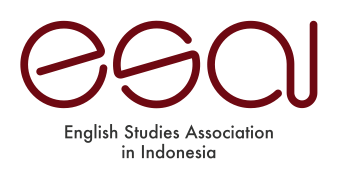AN ITEM ANALYSIS ON ENGLISH PROFICIENCY TEST OF NECESA 2.0 AT UNIVERSITAS PGRI WIRANEGARA
Abstract
English is used widely as the international language. The mastery of English skills has a standardization. One way to analyze (either a person qualified or not) is using a test. Competition can be used as the language testing for English learners. From this background, the researcher intended to analyze the quality of the written test form by NECESA 2.0 which is held by English Student Association. The researcher wanted to analyze the content validity, reliability, item distractor, item difficulty, and discriminating power on English Proficiency Test item of NECESA 2.0.
The researcher used mixed method in this research. This study aims to collect data by calculating the results of the five characteristics of a good test. The research subjects were the participants of English Proficiency Contest of NECESA 2.0. There are 63 senior high school students. This research used two instruments, there are documentation and human instrument.
Based on the findings, English Proficiency Contest of NECESA 2.0 already has very good content validity. The content that has stated in each item is 94% suitable with the English ATP (syllabus). The coefficient value of the reliability of the tests is 0,935. This test also has good item difficulty value. The test-maker is successful make a good proportion in levelling the difficulty of EPC of NECESA 2.0 test. The results of the discriminating power analysis of the participants' answers to the EPC questions can be seen that most of the differentiating power (52%) or 52 items on the EPC are sufficient or in satisfactory category. The item distractor of English Proficiency Contest of NECESA 2.0 still has many unfunctional distractor. There are 148 distractors categorized as poor ID and 76 distractors categorized as very poor ID. It can conclude that distractors has poor distractor and it really needs to be revised.
Keywords
Full Text:
PDFReferences
Akbari, R. (2012). Validity in Language Testing. In B. O’Sullivan, C. Coombe, P. Davidson, & S. Stoynoff (Eds.), The Cambridge Guide to Second Language Assessment. Cambridge University Press.
Arikunto, S. (2018). DASAR-DASAR EVALUASI PENDIDIKAN (R. Damayanti, Ed.; 3rd ed.). Bumi Aksara.
Asrul, Ananda, R., & Rosnita. (2014). EVALUASI PEMBELAJARAN. Cita Pustaka Media .
Brown, H. D., & Abeyvickrama, P. (2018). LANGUANGE ASSESMENT PRINCIPLES AND CLASSROOM PRACTICES (3rd ed.). Pearson.
Chapelle, C. A., & Voss, E. (2013). Evaluation of Language Tests Through Validation Research. In The Companion to Language Assessment (pp. 1079–1097). John Wiley & Sons, Inc. https://doi.org/10.1002/9781118411360.wbcla110
Dąbrowska, E. (2015). What exactly is Universal Grammar, and has anyone seen it? In Frontiers in Psychology (Vol. 6). Frontiers Media S.A. https://doi.org/10.3389/fpsyg.2015.00852
Ekasari, E. N. (2017). Item Analysis of the English Proficiency Contest for SMP at ESA’s Anniversary at STKIP PGRI Pasuruan. University of PGRI Wiranegara .
Fadhlullah. (2019). An Item Analysis of The English Proficiency Contest For Junior High School At The 28th Anniversary of English Student Association. University of PGRI Wiranegara.
Farhady, H. (2012). Principle of Language Assessment. In C. Coombe, P. Davidson, B. O’Sullivan, & S. Stoynoff (Eds.), The Cambridge Guide to Second Language Assessment. Cambridge University Press.
Fauzie, M., Pada, A. U. T., & Supriatno, S. (2021). Analysis of the difficulty index of item bank according to cognitive aspects during the Covid-19 pandemic. Jurnal Penelitian Dan Evaluasi Pendidikan, 25(2). https://doi.org/10.21831/pep.v25i2.42603
Fulcher, G. (2013). Practical Languange Testing (Chatham & Kent, Eds.; Vol. 2). Routledge. https://books.google.co.id/books?id=qbAuAgAAQBAJ&lpg=PP1&ots=7jHJILc3Ag&dq=fulcher%202013&lr&hl=id&pg=PR3#v=onepage&q=fulcher%202013&f=false
Ika Pradanti, S., & Sarosa, T. (2018). An Item Analysis of English Summative Test for The First Semester of The Third Grade Junior High School Students in Surakarta.
Islami, Z. F. (2019). Item Analysis on The English Final Test for Eleventh Grade Students in SMAN 1 Pasuruan. University of PGRI Wiranegara.
Jayanti, D., Husna, N., & Hidayat, D. N. (2019). The Validity and Reliability Analysis of English National Final Examination for Junior High School. 3(2). https://doi.org/10.29408/veles.v3i2.1551.g929
Khariri, A. (2020). 20 Item Analysis of English Summative Test at The Eleventh Grade Students of SMA Negeri 9 Kota Jambi City Academic Year. In Journal Of English Language teaching (Vol. 28, Issue 1).
Lestari, J. R. P. (2020). An Item Analysis On English Proficiency Contest For Junior High School at Universitas PGRI Wiranegara Pasuruan. University of PGRI Wiranegara.
Maharani, A. V., Hidayanto, N., Putro, P. S., Vidya, A., Pancoro, H., & Putro, S. (2020). Item Analysis of English Final Semester Test. In Item Analysis of English Final Semester Test Indonesian Journal of EFL and Linguistics (Vol. 5, Issue 2). www.indonesian-efl-journal.org
McDonald, R. P. (1999). Test Theory: A Unified Treatment (1st ed.). Psychology Press.
Nurjanah, K., Saadah, H., Id, K. A., & Id, H. A. (2022). IMPLEMENTASI PROJEK PENGUATAN PROFIL PELAJAR PANCASILADENGAN TEMA SUARA DEMOKRASI DI SMK SETIA KARYA.
Rahmaini, A., & Nur Taufiq, A. (2018). ANALISIS BUTIR SOAL PENDIDIKAN AGAMA ISLAM DI SMK N 1 SEDAYU TAHUN AJARAN 2017/2018 (Analisis Tingkat Kesukaran, Daya Pembeda dan Fungsi Distraktor pada Soal Pilihan Ganda Kelas XI). Jurnal MUDARRISUNA, 8(1).
Retnawati, H. (2017). Reliabilitas Instrumen Penelitian.
Sary, Y. N. E. (2018). BUKU MATA AJAR EVALUASI PENDIDIKAN (1st ed.). DEEPUBLISH.
Swerdlik, C. (2009). Psychological Testing and Assessment: An Introduction to Tests and Measurement 7th Edition (7th ed.). McGraw-Hill Companies .s
Umi Fatimah, L., & Alfath, K. (2019). ANALISIS KESUKARAN SOAL, DAYA PEMBEDA DAN FUNGSI DISTRAKTOR. Jurnal Komunikasi Dan Pendidikan Islam, 8(2).
Wahyuni, S. (2016). CURRICULUM DEVELOPMENT IN INDONESIAN CONTEXT The Historical Perspectives and the Implementation.
Weigle, S. C. (2012). Assessing Writing. In B. O’Sullivan, C. Coombe, P. Davidson, & S. Stoynoff (Eds.), The Cambridge Guide to Second Language Assessment. Cambridge University Press.
DOI: http://dx.doi.org/10.30813/jelc.v15i2.6169
Refbacks
- There are currently no refbacks.



2.jpg)



